The evolution of the United States Air Force uniform tells a fascinating story of practicality, identity, and changing times. By the 1960s, the Air Force uniform had undergone significant transformations from its Army Air Forces roots. Examining uniforms from this era reveals a distinct style that reflects the Air Force’s growing independence and unique operational needs.
One notable example from the late 1950s and early 1960s is the sage green fatigue shirt. While labels are missing from the shirt pictured, its characteristics align with uniforms of that period. Sage green became a signature color, extending beyond utility uniforms to flight suits, demonstrating its lasting appeal within the Air Force.
The continued use of sage green is further illustrated by the K-2B flight suit. This particular flight suit, featuring a black label, is estimated to be from around 1959 based on comparable contract numbers seen on dated examples. The presence of undated labels on some uniforms highlights the challenges in pinpointing exact production years, relying instead on style and material cues to place them within a historical context.
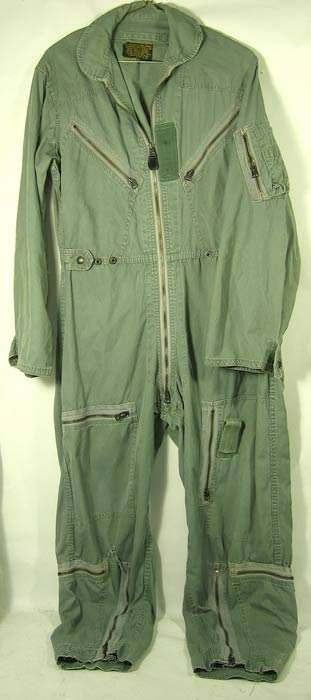 K-2B sage green flight suit, showcasing the Air Force's continued use of the color.
K-2B sage green flight suit, showcasing the Air Force's continued use of the color.
 Close-up of the black label inside the K-2B flight suit, typical of the era but lacking a date.
Close-up of the black label inside the K-2B flight suit, typical of the era but lacking a date.
Looking further back, official US Air Force photos of basic training classes from 1948 onwards provide valuable insights into uniform evolution leading up to the 1960s. These images capture the transition as the newly established Air Force (formed in September 1947) developed its own distinct identity separate from the Army.
Early photos show recruits wearing Army-style visor caps, a clear indication of the Air Force’s nascent stage and reliance on existing Army uniform components.
 Basic training class circa 1950 showing recruits in Army style visor caps, reflecting the early USAF uniform.
Basic training class circa 1950 showing recruits in Army style visor caps, reflecting the early USAF uniform.
By April 1950, a shift is visible with trainees wearing both Army caps and a new dark blue cap, alongside the khaki uniform. This dual appearance signifies a period of change and adaptation as the Air Force began to introduce its own uniform items.
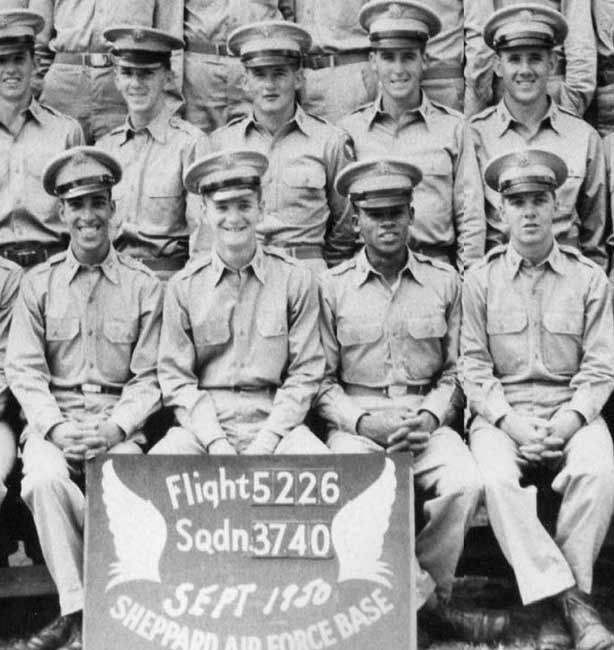 April 1950 basic training class illustrating the transition with both Army caps and new dark blue caps being worn.
April 1950 basic training class illustrating the transition with both Army caps and new dark blue caps being worn.
Images from September 1950 further solidify this transition. The presence of Women in the Air Force (WAF) personnel in these photos also highlights the inclusive nature of the evolving Air Force.
Class photos from 1951 reveal instructors wearing helmets, contrasting with the soft caps worn by recruits. This distinction in headgear likely denoted rank and role within the training environment.
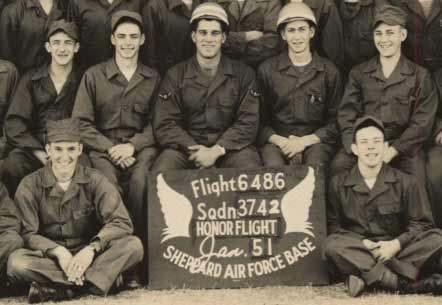 January 1951 basic training instructors in helmets and recruits in soft caps, indicating rank differentiation in uniforms.
January 1951 basic training instructors in helmets and recruits in soft caps, indicating rank differentiation in uniforms.
In 1951 and 1952, visor caps were still styled in the “crusher” look, a popular modification among servicemen at the time. By 1952, Ike jackets and boots were prominent features of the basic training uniform, indicating a further standardization and refinement of the Air Force look. WAF classes from the same year mirrored these uniform trends.
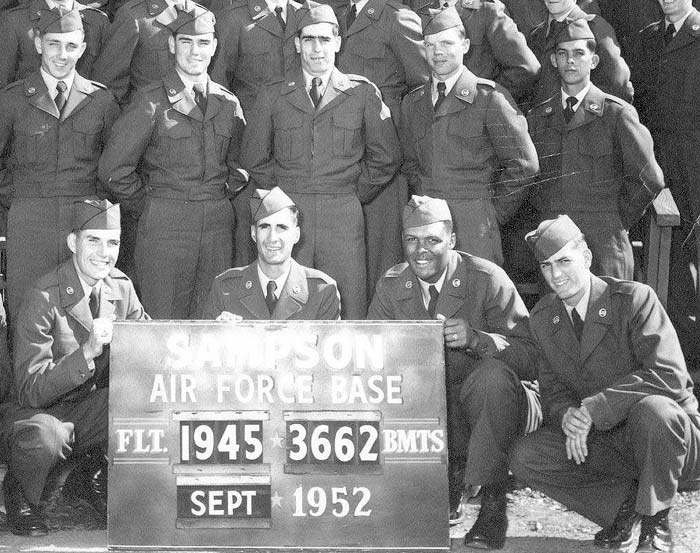 September 1952 basic training class featuring Ike jackets and boots as standard uniform components.
September 1952 basic training class featuring Ike jackets and boots as standard uniform components.
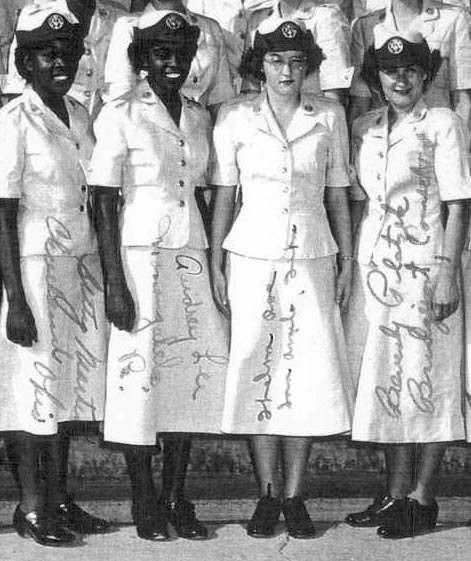 1952 WAF basic training class reflecting similar uniform styles to their male counterparts.
1952 WAF basic training class reflecting similar uniform styles to their male counterparts.
Moving into February 1953 and then January 1960, a noticeable shift in uniform aesthetics occurred. By 1960, the uniform adopted a more functional, less stylized appearance compared to the sharper looks of the 1950s. The description of the 1960 uniform as “geeky” reflects a subjective perception of its less tailored and perhaps less visually striking design compared to earlier uniforms. This 1960s style was reminiscent of what recruits experienced even later in the decade, such as at Lackland AFB in 1968.
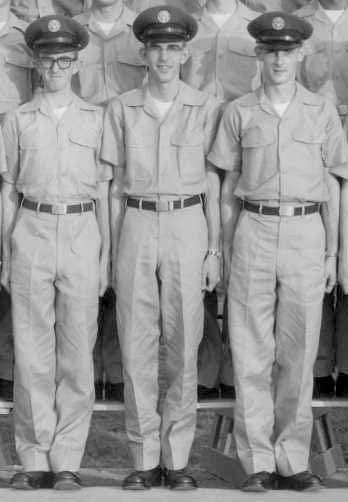 January 1960 basic training class showcasing the more functional and less stylized uniform of the era.
January 1960 basic training class showcasing the more functional and less stylized uniform of the era.
Officer uniforms of the 1950s also presented a smart and professional image. Khaki suits for officers in the early to mid-1950s were particularly sharp. Photos from 1951 and 1955 capture officers in these khaki uniforms, demonstrating a distinct style for leadership personnel.
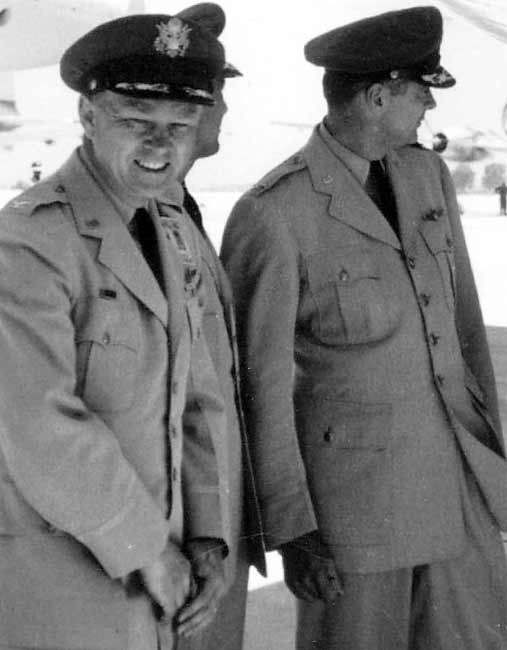 Officers meeting Eddie Rickenbacker in May 1951, displaying the smart khaki officer uniforms of the period.
Officers meeting Eddie Rickenbacker in May 1951, displaying the smart khaki officer uniforms of the period.
The historical context provided by USAF uniform histories clarifies the timeline. While the Air Force officially adopted Shade 84 blue uniforms in January 1949, widespread adoption took time, with many airmen not receiving their “blues” until late 1950. In the interim period, officers continued wearing the Army’s “pinks and greens,” and airmen wore olive drab (OD) uniforms. This transitional period underscores the logistical and practical aspects of establishing a distinct uniform identity for a new military branch.
In conclusion, the 1960’s Air Force uniform represents a point in time where functionality began to take precedence in design, moving slightly away from the sharper, more stylized uniforms of the immediate post-WWII era. This evolution is captured through visual records and historical accounts, providing a valuable understanding of the changing priorities and identity of the US Air Force during this period.

